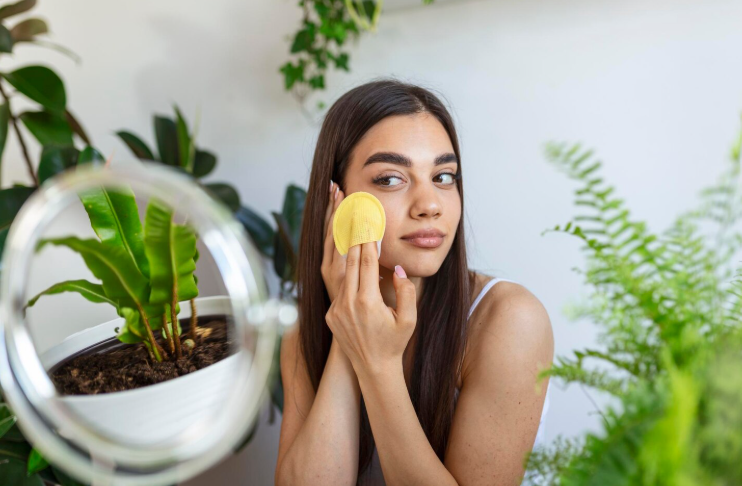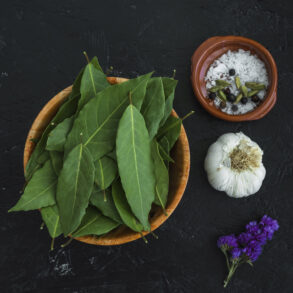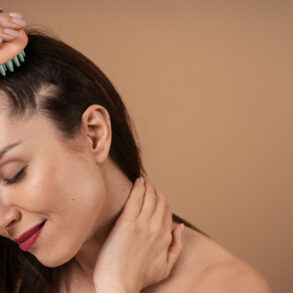Introduction: The Allure of the Ancient in a Modern World
In an era dominated by chemical-laden solutions and complex skincare routines, the call back to nature has never been louder. Ayurvedic products, with their promise of holistic healing, ancient wisdom, and natural ingredients, have surged in popularity. From social media influencers showcasing their “green” routines to pharmacies dedicating entire shelves to these herbal concoctions, Ayurvedic products are being embraced as a gentler, more harmonious path to skin health. The fundamental premise is alluring: nature, in its infinite wisdom, provides everything we need to look and feel our best.
However, this rapid rise in popularity brings with it a critical, and often overlooked, question: Do Ayurvedic products really need a dermatologist’s approval? The common perception is that “natural” equates to “safe for all,” creating a false sense of security that leads many consumers to self-prescribe and self-diagnose their skin concerns with these Ayurvedic products. This article will dissect this very question, moving beyond marketing claims to explore the scientific, safety, and practical considerations of integrating Ayurvedic products into your skincare regimen. We will navigate the complex interplay between traditional wisdom and modern medical science, ultimately arguing that a dermatologist’s guidance is not just beneficial but often essential for the safe and effective use of Ayurvedic products.
Part 1: Understanding Ayurveda and Its Approach to Skin Health
1.1. The Philosophical Foundation of Ayurveda
Ayurveda, translating to “the science of life,” is a 5,000-year-old holistic healing system that originated in India. It operates on the principle that health is a state of balance between the mind, body, and spirit, and disease is a manifestation of imbalance. Unlike allopathic medicine, which often focuses on treating symptoms, Ayurveda seeks to address the root cause of an issue.
Central to Ayurvedic philosophy are the three doshas, or bio-energies:
- Vata (Air & Ether): Governs movement, creativity, and dryness. When imbalanced, it can lead to dry, flaky, and dehydrated skin.
- Pitta (Fire & Water): Governs metabolism, digestion, and transformation. Pitta imbalance manifests as inflammation, sensitivity, acne, rosacea, and rashes.
- Kapha (Earth & Water): Governs structure, stability, and lubrication. Excess Kapha can result in oily skin, large pores, congestion, and cystic acne.
According to Ayurveda, every individual has a unique constitution (Prakriti), a specific ratio of these doshas. True Ayurvedic skincare is not one-size-fits-all; it is a personalized regimen designed to pacify aggravated doshas and restore an individual’s inherent balance. This personalized approach is a key strength of authentic Ayurvedic practice.
1.2. Common Ayurvedic Ingredients and Their Purported Benefits
Ayurvedic products are formulated with a vast pharmacopoeia of herbs, minerals, and oils. Some of the most celebrated ingredients for skin health include:
- Neem: Revered for its potent antibacterial and antifungal properties, it is a cornerstone in Ayurvedic products for acne and inflammatory skin conditions.
- Turmeric (Haridra): Contains the active compound curcumin, a powerful anti-inflammatory and antioxidant. It is used to brighten the complexion, reduce hyperpigmentation, and calm irritation.
- Aloe Vera (Kumari): Known for its cooling, soothing, and moisturizing properties, it is ideal for Pitta-related inflammation and sunburns.
- Manjistha: A blood-purifying herb believed to clear toxins from the skin, making it a common ingredient in Ayurvedic products for detoxification and achieving a clear complexion.
- Sandalwood (Chandana): With its cooling and calming scent and properties, it is used to soothe irritated skin and reduce excess heat (Pitta).
- Kumkumadi Tailam: A legendary blend of herbs and oils, often including saffron, that is touted for its anti-aging, brightening, and complexion-enhancing effects.
The efficacy of these individual Ayurvedic ingredients is increasingly being validated by modern scientific research, which identifies their active phytochemicals and mechanisms of action.
Part 2: The Crucial Case for Dermatologist Approval
Despite the profound wisdom of Ayurveda, the modern consumer’s interaction with Ayurvedic products is fraught with potential pitfalls that necessitate professional oversight. The question “Do Ayurvedic products really need a dermatologist’s approval?” becomes particularly relevant when considering the following factors.
2.1. The Myth of “100% Natural = 100% Safe”
This is the most pervasive and dangerous myth surrounding Ayurvedic products. Nature is a potent chemist, and many of the most powerful pharmaceuticals are derived from plant sources. Just because an ingredient grows from the earth does not mean it is harmless for every person or every skin condition.
- Allergens and Irritants: Ingredients like neem, certain essential oils, or even turmeric can be potent allergens or irritants for some individuals. A patch test, often recommended by dermatologists, is crucial before applying any new Ayurvedic product broadly.
- Comedogenic Properties: Some natural oils and butters used in Ayurvedic formulations, such as coconut oil, are highly comedogenic (pore-clogging) for acne-prone individuals. Using such a product without understanding one’s skin type can exacerbate breakouts.
The safety profile of any substance, natural or synthetic, is dependent on the dose, the individual’s susceptibility, and the formulation. A dermatologist can help identify potential allergens and irritants specific to your skin’s biology.
2.2. The Critical Issue of Purity, Potency, and Standardization
This is arguably the most significant challenge in the mass-market Ayurvedic products industry. Unlike pharmaceutical drugs, which are subject to rigorous standardization ensuring every batch has identical potency and purity, the regulatory landscape for Ayurvedic products can be inconsistent.
- Heavy Metal Contamination: There have been well-documented cases, both in India and globally, of certain Ayurvedic products being contaminated with dangerous levels of heavy metals like lead, mercury, and arsenic. These are sometimes intentionally added in traditional Bhasma (ash) preparations but can be present unintentionally due to poor manufacturing practices. A dermatologist is aware of these risks and can guide patients towards reputable, third-party tested brands.
- Variability in Active Ingredient Concentration: The concentration of active compounds in a herb can vary based on the soil, climate, and time of harvest. A product claiming to contain “2% turmeric” may have vastly different efficacy from one batch to another. A dermatologist can recommend brands that adhere to Good Manufacturing Practices (GMP) and provide standardized extracts.
- Adulteration: The demand for Ayurvedic products has led to unethical practices where products are adulterated with synthetic steroids or other modern chemicals to produce quick, dramatic results, leading to severe side effects like steroid-induced acne or skin thinning upon discontinuation.
A dermatologist’s approval acts as a critical filter, helping you navigate this unregulated market and select high-quality, safe Ayurvedic products.
2.3. Accurate Diagnosis: Treating the Cause, Not Just the Symptom
Self-diagnosis is a risky endeavor. What appears to be a simple case of “adult acne” could be rosacea, perioral dermatitis, or a symptom of an underlying hormonal imbalance. Applying the wrong Ayurvedic product can worsen the condition.
- Case Study 1: Priya, 28, started using a popular neem and tulsi face wash for her red, bumpy skin. Assuming it was acne, she was trying to dry it out. The condition worsened, becoming increasingly inflamed and painful. A visit to the dermatologist revealed it was not acne but rosacea, a condition exacerbated by harsh, drying ingredients. The very Ayurvedic product she thought was helping was, in fact, causing significant harm.
- Case Study 2: *Rohan, 35, began applying a sandalwood-based paste to lighten dark patches on his face. After weeks of no improvement, he consulted a dermatologist who diagnosed him with Melasma, a hormonally driven hyperpigmentation that often deepens with heat-generating treatments. The sandalwood paste, while cooling, was not the appropriate first-line treatment, and he was prescribed a combination of topical agents that specifically target melasma pathways.*
A dermatologist possesses the training to make a precise diagnosis. They can then determine if a specific Ayurvedic product is a suitable complementary therapy or if a different treatment modality is required. This ensures you are treating the root cause of your skin issue, not just masking the symptoms with the wrong Ayurvedic skincare approach.
2.4. Drug-Herb Interactions: A Silent Threat
For individuals on prescribed medications, the use of Ayurvedic products can pose a serious risk of interactions.
- Blood Thinners: Ingredients like Ginkgo Biloba (sometimes used in Ayurvedic-inspired formulations) can potentiate the effect of blood-thinning medications like Warfarin, increasing the risk of bleeding.
- Immunosuppressants: Certain herbs are believed to stimulate the immune system, which could counteract the effects of immunosuppressant drugs prescribed for autoimmune conditions like psoriasis or lupus.
- Topical Interactions: Applying certain Ayurvedic oils or pastes on skin being treated with potent topical prescriptions like retinoids or hydroquinone can lead to increased irritation, sensitivity, or render the prescription less effective.
A dermatologist, with access to your full medical history, can identify these potential interactions and advise against specific Ayurvedic ingredients that may conflict with your ongoing treatments.
Part 3: The Synergistic Approach: Integrating Ayurveda with Dermatology
The most prudent path forward is not to choose between Ayurveda and dermatology, but to seek their synergy. The future of holistic skin health lies in an integrated model where the strengths of both systems are leveraged.
3.1. The Role of the Dermatologist: The Diagnostician and Scientist
The dermatologist is the expert in:
- Diagnosis: Utilizing tools like dermatoscopes and biopsies to accurately identify skin diseases.
- Evidence-Based Medicine: Prescribing treatments whose safety and efficacy have been validated through rigorous clinical trials.
- Managing Complex Conditions: Treating severe skin diseases like skin cancer, severe psoriasis, and advanced acne that require pharmaceutical intervention.
- Procedural Expertise: Performing surgeries, laser treatments, and injections.
In the context of Ayurvedic products, the dermatologist’s role is to vet their safety, assess their suitability for a specific diagnosed condition, and monitor for any adverse effects or interactions.
3.2. The Role of the Ayurvedic Practitioner: The Root-Cause Analyst and Holistic Guide
A qualified Ayurvedic practitioner (Vaidya) is the expert in:
- Constitutional Analysis: Determining your unique Prakriti and Vikriti (current state of imbalance).
- Lifestyle and Dietary Guidance: Providing personalized recommendations on diet (Ahara), daily routine (Dinacharya), and seasonal regimen (Ritucharya) to support skin health from within.
- Personalized Formulations: Creating tailored herbal preparations, diets, and lifestyle plans, rather than recommending off-the-shelf Ayurvedic products.
- Detoxification Therapies: Administering supervised cleansing procedures like Panchakarma.
3.3. A Model for Collaborative Care
The ideal scenario involves a collaborative relationship. Imagine a patient with chronic eczema:
- The dermatologist provides the accurate diagnosis, prescribes a topical steroid to control the acute flare-up, and rules out other conditions.
- The Ayurvedic practitioner works on identifying the doshic imbalance (often a Pitta and Vata aggravation), recommends a cooling diet, stress-management techniques like specific yoga postures, and perhaps suggests a gentle, internally taken herbal supplement to support liver function and detoxification.
- The patient uses a high-quality, dermatologist-approved Ayurvedic product like a neem and manjistha paste for its anti-inflammatory properties during non-acute phases, as recommended by both practitioners.
This integrated approach addresses both the immediate symptoms and the underlying systemic imbalances, offering a more comprehensive and sustainable path to healing. The use of any Ayurvedic product in this model is intentional, monitored, and synergistic.
Part 4: Global Perspectives and Regulatory Landscapes
The perception and regulation of Ayurvedic products vary significantly across the globe, influencing how and whether dermatologist involvement is sought.
- India: As the birthplace of Ayurveda, India has a dedicated regulatory body, the AYUSH Ministry, which governs the manufacture and sale of Ayurvedic products. However, enforcement and quality control can be inconsistent, leading to the market being flooded with both high-quality and substandard products. Here, the role of a dermatologist in vetting Ayurvedic products is critical.
- United States: The FDA regulates Ayurvedic products as dietary supplements under the Dietary Supplement Health and Education Act (DSHEA) of 1994. This means they are not required to undergo pre-market approval for safety and efficacy like drugs. The onus is on the FDA to prove a product is unsafe after it is on the market. This regulatory gap makes dermatologist consultation even more vital for American consumers.
- European Union: The EU has stricter regulations, with many Ayurvedic products being regulated under the Traditional Herbal Medicinal Products Directive (THMPD), which requires proof of traditional use and safety. However, many are still sold as cosmetics, which have less stringent requirements.
- Australia: The Therapeutic Goods Administration (TGA) regulates these products, with listed medicines requiring less evidence than registered medicines. Again, this creates a spectrum of quality.
This global patchwork of regulations underscores a universal truth: the consumer cannot rely solely on regulatory bodies for safety assurance. The dermatologist, therefore, becomes a personal regulatory authority, providing a essential layer of protection regardless of geographical location.
Part 5: Frequently Asked Questions (FAQs)
Q1: I have sensitive skin. Can I use Ayurvedic products without a patch test?
A: Absolutely not. Sensitive skin is more prone to reactions. Even natural ingredients can be irritants. Always perform a patch test on a small, discreet area (like behind the ear or inner arm) for 24-48 hours before applying any new Ayurvedic product to your face, regardless of how “gentle” it claims to be.
Q2: My dermatologist prescribed me a retinoid. Can I use my Kumkumadi Oil with it?
A: You must consult your dermatologist before combining any Ayurvedic product with a potent active like a retinoid. Retinoids already increase skin sensitivity and cell turnover. Adding an oil, even a beneficial one, could potentially increase irritation or alter the absorption of the medication. Your dermatologist can advise on the correct timing and layering, or recommend against it.
Q3: Are there any specific Ayurvedic brands that dermatologists recommend?
A: Dermatologists are more likely to recommend brands that are transparent about their sourcing, practice third-party testing for heavy metals and microbial contamination, use standardized extracts, and have scientific data to back their claims. They will avoid brands making outlandish, unsubstantiated promises.
Q4: Can Ayurvedic products replace my prescription acne medication?
A: For mild, occasional acne, certain Ayurvedic products may be sufficient. However, for moderate to severe, inflammatory, or cystic acne, prescription medications like topical retinoids, antibiotics, or isotretinoin are the gold-standard, evidence-based treatments. Ayurvedic products may serve as excellent adjunctive therapy to soothe inflammation and support skin healing, but they should not replace a dermatologist-prescribed regimen for serious conditions without explicit medical approval.
Q5: How can I find a dermatologist who is open to Ayurveda?
A: Look for dermatologists who practice integrative or holistic dermatology. You can often find them through professional networks like the Integrative Dermatology Circle or by directly asking during a consultation about their openness to complementary therapies. A good sign is a dermatologist who asks about your entire lifestyle, including diet and supplements.
Part 6: Debunking Common Myths
Myth 1: “Ayurvedic products are just herbs; they can’t possibly harm you.”
Reality: As discussed, herbs are potent. They can cause allergic reactions, phototoxicity, interact with medications, and be contaminated with harmful substances. The belief that all Ayurvedic products are inherently harmless is a dangerous misconception.
Myth 2: “If it’s worked for thousands of years, it must be safe and effective.”
Reality: Traditional use is a valuable data point, but it is not a substitute for modern clinical evidence. Ancient practices were also based on the knowledge and environmental context of their time. Modern science allows us to understand mechanisms, identify risks (like heavy metal toxicity), and standardize doses for consistent results, making the combination of tradition and science paramount for the safe use of Ayurvedic products.
Myth 3: “Dermatologists only push expensive, chemical-based products.”
Reality: A good dermatologist’s primary goal is the health of your skin. While they rely on evidence-based medicine (which often includes synthesized molecules), many are increasingly knowledgeable about botanicals and are happy to incorporate safe, effective natural options into a treatment plan if they are proven to work for your specific condition.
Conclusion: A Prescription for Prudence
The journey through the world of Ayurvedic products reveals a landscape rich with potential but also dotted with significant risks. The answer to the central question—Do Ayurvedic products really need a dermatologist’s approval?—is a resounding and nuanced yes.
Ayurvedic products are not mere cosmetics; they are bioactive formulations capable of exerting profound effects on the skin and body. The romanticized notion of “natural equals safe” is a disservice to the complexity of both human biology and these potent herbal preparations. The need for a dermatologist’s approval is not a dismissal of Ayurveda’s value, but rather a respectful and necessary step to harness its power safely and effectively.
A dermatologist provides the critical safeguards of accurate diagnosis, risk assessment for contamination and interactions, and evidence-based validation. They are the bridge that allows the ancient wisdom of Ayurveda to be applied with the precision and safety standards of modern science. The most enlightened approach to skin health is not an “either/or” choice but a “both/and” collaboration. By seeking a dermatologist’s approval for the Ayurvedic products you choose to use, you are not abandoning tradition; you are honoring it by ensuring it is applied in the safest, most intelligent, and most effective way possible for your unique skin. In the quest for radiant skin, let wisdom—both ancient and modern—be your guide.










